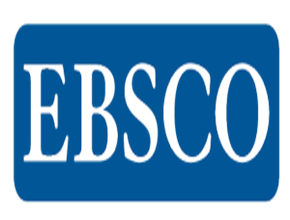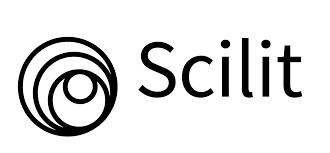A Review: Neurotoxicity of Doxorubicin
DOI:
https://doi.org/10.32792/utq/utjsci/v12i1.1308Keywords:
Cytotoxicity , Doxorubicin, Neurotoxicity, Chemotherapy, Oxidative stress, Blood-brain barrierAbstract
Although, Doxorubicin an effective chemotherapeutic agent, has been associated with significant neurotoxic effects, impacting the nervous system. This neurotoxicity can lead to various neurological complications, including cognitive impairments, neuropathic pain, and motor dysfunction. The neurotoxic effects of Doxorubicin are attributed to several mechanisms, including oxidative stress, inflammation, neuroinflammation and apoptosis of neuronal cells. These pathways become even more complex when multiple drugs are used simultaneously or in a fixed sequence, which is often the case in combination chemotherapy brain damage. Further research is needed to elucidate the precise mechanisms underlying doxorubicin-induced neurotoxicity and explore potential protective agents. In addition, studies focusing on long-term neurological outcomes in cancer survivors treated with doxorubicin are warranted. Developing neuroprotective agents or alternative treatment regimens or using nanocomposites that reduce the neurotoxic effects while maintaining the efficacy of doxorubicin is a very important area for future investigation.
Received: 2024-10-12
Revised: 2024-11-27
Accepted: 2024-12-17
References
M. Mohseni et al., "Co-treatment by docetaxel and vinblastine breaks down P-glycoprotein mediated chemo-resistance," Iranian Journal of Basic Medical Sciences, vol. 19, no. 3, p. 300, 2016.
S. Dallavalle et al., "Improvement of conventional anti-cancer drugs as new tools against multidrug resistant tumors," Drug Resistance Updates, vol. 50, p. 100682, 2020.
K. Bukowski, M. Kciuk, and R. Kontek, "Mechanisms of multidrug resistance in cancer chemotherapy," International journal of molecular sciences, vol. 21, no. 9, p. 3233, 2020.
C. Carvalho et al., "Doxorubicin: the good, the bad and the ugly effect," Current medicinal chemistry, vol. 16, no. 25, pp. 3267-3285, 2009.
P. S. Rawat, A. Jaiswal, A. Khurana, J. S. Bhatti, and U. Navik, "Doxorubicin-induced cardiotoxicity: An update on the molecular mechanism and novel therapeutic strategies for effective management," Biomedicine & Pharmacotherapy, vol. 139, p. 111708, 2021.
Y. Shi, M. Moon, S. Dawood, B. McManus, and P. Liu, "Mechanismen und Management der Doxorubicinkardiotoxiztät," Herz, vol. 36, pp. 296-305, 2011.
N. Wenningmann, M. Knapp, A. Ande, T. R. Vaidya, and S. Ait-Oudhia, "Insights into doxorubicin-induced cardiotoxicity: molecular mechanisms, preventive strategies, and early monitoring," Molecular pharmacology, vol. 96, no. 2, pp. 219-232, 2019.
M. Sheibani et al., "Doxorubicin-induced cardiotoxicity: an overview on pre-clinical therapeutic approaches," Cardiovascular Toxicology, vol. 22, no. 4, pp. 292-310, 2022.
B. Kalyanaraman, "Teaching the basics of the mechanism of doxorubicin-induced cardiotoxicity: Have we been barking up the wrong tree?," Redox biology, vol. 29, p. 101394, 2020.
A. Pugazhendhi, T. N. J. I. Edison, B. K. Velmurugan, J. A. Jacob, and I. Karuppusamy, "Toxicity of Doxorubicin (Dox) to different experimental organ systems," Life sciences, vol. 200, pp. 26-30, 2018.
O. Tacar, P. Sriamornsak, and C. R. Dass, "Doxorubicin: an update on anticancer molecular action, toxicity and novel drug delivery systems," Journal of pharmacy and pharmacology, vol. 65, no. 2, pp. 157-170, 2013.
U. P. Mohan, T. P. PB, S. T. A. Iqbal, and S. Arunachalam, "Mechanisms of doxorubicin-mediated reproductive toxicity–a review," Reproductive Toxicology, vol. 102, pp. 80-89, 2021.
A. H. Alhowail et al., "Doxorubicin-induced neurotoxicity is associated with acute alterations in synaptic plasticity, apoptosis, and lipid peroxidation," Toxicology mechanisms and methods, vol. 29, no. 6, pp. 457-466, 2019.
P. L. Prasanna, K. Renu, and A. V. Gopalakrishnan, "New molecular and biochemical insights of doxorubicin-induced hepatotoxicity," Life sciences, vol. 250, p. 117599, 2020.
T. S Lahoti, D. Patel, V. Thekkemadom, R. Beckett, and S. D Ray, "Doxorubicin-induced in vivo nephrotoxicity involves oxidative stress-mediated multiple pro-and anti-apoptotic signaling pathways," Current neurovascular research, vol. 9, no. 4, pp. 282-295, 2012.
S. Y. van der Zanden, X. Qiao, and J. Neefjes, "New insights into the activities and toxicities of the old anticancer drug doxorubicin," The FEBS journal, vol. 288, no. 21, pp. 6095-6111, 2021.
S. R. Kesler and D. W. Blayney, "Neurotoxic effects of anthracycline-vs nonanthracycline-based chemotherapy on cognition in breast cancer survivors," JAMA oncology, vol. 2, no. 2, pp. 185-192, 2016.
I. Lim, H.-Y. Joung, A. R. Yu, I. Shim, and J. S. Kim, "PET evidence of the effect of donepezil on cognitive performance in an animal model of chemobrain," BioMed research international, vol. 2016, no. 1, p. 6945415, 2016.
C.-H. Fan et al., "SPIO-conjugated, doxorubicin-loaded microbubbles for concurrent MRI and focused-ultrasound enhanced brain-tumor drug delivery," Biomaterials, vol. 34, no. 14, pp. 3706-3715, 2013.
C. D. Aluise et al., "2-Mercaptoethane sulfonate prevents doxorubicin-induced plasma protein oxidation and TNF-α release: implications for the reactive oxygen species-mediated mechanisms of chemobrain," Free Radical Biology and Medicine, vol. 50, no. 11, pp. 1630-1638, 2011.
K. Kamińska and A. Cudnoch-Jędrzejewska, "A review on the neurotoxic effects of doxorubicin," Neurotoxicity Research, vol. 41, no. 5, pp. 383-397, 2023.
A. Das, N. Ranadive, M. Kinra, M. Nampoothiri, D. Arora, and J. Mudgal, "An overview on chemotherapy-induced cognitive impairment and potential role of antidepressants," Current neuropharmacology, vol. 18, no. 9, pp. 838-851, 2020.
A. H. Alhowail and M. A. Aldubayan, "Doxorubicin impairs cognitive function by upregulating AMPAR and NMDAR subunit expression and increasing neuroinflammation, oxidative stress, and apoptosis in the brain," Frontiers in Pharmacology, vol. 14, p. 1251917, 2023.
J. Du et al., "Doxorubicin-induced cognitive impairment: the mechanistic insights," Frontiers in oncology, vol. 11, p. 673340, 2021.
Z. S. Clayton et al., "Doxorubicin-induced oxidative stress and endothelial dysfunction in conduit arteries is prevented by mitochondrial-specific antioxidant treatment," Cardio Oncology, vol. 2, no. 3, pp. 475-488, 2020.
K. Du, Q. Xia, H. Heng, and F. Feng, "Temozolomide–doxorubicin conjugate as a double intercalating agent and delivery by apoferritin for glioblastoma chemotherapy," ACS applied materials & interfaces, vol. 12, no. 31, pp. 34599-34609, 2020.
X. Ren et al., "The triangle of death of neurons: Oxidative damage, mitochondrial dysfunction, and loss of choline-containing biomolecules in brains of mice treated with doxorubicin. Advanced insights into mechanisms of chemotherapy induced cognitive impairment (“chemobrain”) involving TNF-α," Free Radical Biology and Medicine, vol. 134, pp. 1-8, 2019.
I. Sardi et al., "Pharmacological modulation of blood-brain barrier increases permeability of doxorubicin into the rat brain," American journal of cancer research, vol. 3, no. 4, p. 424, 2013.
T. Licht et al., "Hippocampal neural stem cells facilitate access from circulation via apical cytoplasmic processes," Elife, vol. 9, p. e52134, 2020.
C.-Y. Kong et al., "Underlying the mechanisms of doxorubicin-induced acute cardiotoxicity: oxidative stress and cell death," International journal of biological sciences, vol. 18, no. 2, p. 760, 2022.
X.-Y. Li, X.-F. Liao, H.-B. Wang, and J. Zhang, "Doxorubicin resistance induces IL6 activation in the colon cancer cell line LS180," Oncology Letters, vol. 16, no. 5, pp. 5923-5929, 2018.
T. Wang et al., "Role of mitochondria in doxorubicin-mediated cardiotoxicity: from molecular mechanisms to therapeutic strategies," Cell Stress and Chaperones, 2024.
Y. Pei, Y. Liu, C. Xie, X. Zhang, and H. You, "Detecting the formation kinetics of doxorubicin-DNA interstrand cross-link at the single-molecule level and clinically relevant concentrations of doxorubicin," Analytical chemistry, vol. 92, no. 6, pp. 4504-4511, 2020.
J. F. M. Manchon, Y. Dabaghian, N.-E. Uzor, S. R. Kesler, J. S. Wefel, and A. S. Tsvetkov, "Levetiracetam mitigates doxorubicin-induced DNA and synaptic damage in neurons," Scientific reports, vol. 6, no. 1, p. 25705, 2016.
Y. J. Lee and C. Lee, "Porcine deltacoronavirus induces caspase-dependent apoptosis through activation of the cytochrome c-mediated intrinsic mitochondrial pathway," Virus research, vol. 253, pp. 112-123, 2018.
G. V. Ramalingayya et al., "Rutin protects against neuronal damage in vitro and ameliorates doxorubicin-induced memory deficits in vivo in Wistar rats," Drug design, development and therapy, pp. 1011-1026, 2017.
B. Jawad, L. Poudel, R. Podgornik, N. F. Steinmetz, and W.-Y. Ching, "Molecular mechanism and binding free energy of doxorubicin intercalation in DNA," Physical Chemistry Chemical Physics, vol. 21, no. 7, pp. 3877-3893, 2019.
F. Yang, C. J. Kemp, and S. Henikoff, "Doxorubicin enhances nucleosome turnover around promoters," Current Biology, vol. 23, no. 9, pp. 782-787, 2013.
F. Yang, S. S. Teves, C. J. Kemp, and S. Henikoff, "Doxorubicin, DNA torsion, and chromatin dynamics," Biochimica et Biophysica Acta (BBA)-Reviews on Cancer, vol. 1845, no. 1, pp. 84-89, 2014.
J. F. M. Manchon et al., "TFEB ameliorates the impairment of the autophagy-lysosome pathway in neurons induced by doxorubicin," Aging (Albany NY), vol. 8, no. 12, p. 3507, 2016.
X. Yue, C. Bai, D. Xie, T. Ma, and P.-K. Zhou, "DNA-PKcs: a multi-faceted player in DNA damage response," Frontiers in genetics, vol. 11, p. 607428, 2020.
J. Cadet and K. J. Davies, "Oxidative DNA damage & repair: an introduction," Free Radical Biology and Medicine, vol. 107, pp. 2-12, 2017.
M. Redza-Dutordoir and D. A. Averill-Bates, "Activation of apoptosis signalling pathways by reactive oxygen species," Biochimica et Biophysica Acta (BBA)-Molecular Cell Research, vol. 1863, no. 12, pp. 2977-2992, 2016.
M. Kciuk, A. Gielecińska, S. Mujwar, M. Mojzych, and R. Kontek, "Cyclin-dependent kinase synthetic lethality partners in DNA damage response," International Journal of Molecular Sciences, vol. 23, no. 7, p. 3555, 2022.
S. Victorelli and J. F. Passos, "Reactive oxygen species detection in senescent cells," Cellular Senescence: Methods and Protocols, pp. 21-29, 2019.
J. Amani et al., "Cyclin-dependent kinase inhibitors (CDKIs) and the DNA damage response: the link between signaling pathways and cancer," DNA repair, vol. 102, p. 103103, 2021.
H. Walczak, "Death receptor–ligand systems in cancer, cell death, and inflammation," Cold Spring Harbor perspectives in biology, vol. 5, no. 5, p. a008698, 2013.
W. Deng, J. B. Aimone, and F. H. Gage, "New neurons and new memories: how does adult hippocampal neurogenesis affect learning and memory?," Nature reviews neuroscience, vol. 11, no. 5, pp. 339-350, 2010.
Y. Kitamura et al., "Influence of nicotine on doxorubicin and cyclophosphamide combination treatment-induced spatial cognitive impairment and anxiety-like behavior in rats," Naunyn-Schmiedeberg's archives of pharmacology, vol. 390, pp. 369-378, 2017.
R. A. Kohman and J. S. Rhodes, "Neurogenesis, inflammation and behavior," Brain, behavior, and immunity, vol. 27, pp. 22-32, 2013.
I. Alvarez Cooper, K. Beecher, F. Chehrehasa, A. Belmer, and S. E. Bartlett, "Tumour necrosis factor in neuroplasticity, neurogenesis and alcohol use disorder," Brain plasticity, vol. 6, no. 1, pp. 47-66, 2020.
K. Belarbi, C. Arellano, R. Ferguson, T. Jopson, and S. Rosi, "Chronic neuroinflammation impacts the recruitment of adult-born neurons into behaviorally relevant hippocampal networks," Brain, behavior, and immunity, vol. 26, no. 1, pp. 18-23, 2012.
T. Masuoka et al., "Augmentation of endogenous acetylcholine uptake and cholinergic facilitation of hippocampal long-term potentiation by acetylcholinesterase inhibition," Neuroscience, vol. 404, pp. 39-47, 2019.
J. T. Keeney et al., "Doxorubicin-induced elevated oxidative stress and neurochemical alterations in brain and cognitive decline: protection by MESNA and insights into mechanisms of chemotherapy-induced cognitive impairment (“chemobrain”)," Oncotarget, vol. 9, no. 54, p. 30324, 2018.
S. E. El-Agamy, A. K. Abdel-Aziz, S. Wahdan, A. Esmat, and S. S. Azab, "Astaxanthin ameliorates doxorubicin-induced cognitive impairment (chemobrain) in experimental rat model: impact on oxidative, inflammatory, and apoptotic machineries," Molecular neurobiology, vol. 55, pp. 5727-5740, 2018.
Y. Wu, G.-Y. Liao, H.-J. Ke, and P. Liu, "Effects of Snake-Derived Phospholipase A2 Inhibitors on Acute Pancreatitis: In vitro and in vivo Characterization," Drug Design, Development and Therapy, pp. 4765-4774, 2020.
M.-A. Urbahn et al., "Phospholipase D1 regulation of TNF-alpha protects against responses to LPS," Scientific Reports, vol. 8, no. 1, p. 10006, 2018.
D. Wu, W. Zhang, Y. Chen, H. Ma, and M. Wang, "Platycodin D inhibits proliferation, migration and induces chemosensitization through inactivation of the NF‐κB and JAK 2/STAT 3 pathways in multiple myeloma cells," Clinical and Experimental Pharmacology and Physiology, vol. 46, no. 12, pp. 1194-1200, 2019.
H. Zhu et al., "Doxorubicin redox biology: redox cycling, topoisomerase inhibition, and oxidative stress," Reactive oxygen species (Apex, NC), vol. 1, no. 3, p. 189, 2016.
E. Birben, U. M. Sahiner, C. Sackesen, S. Erzurum, and O. Kalayci, "Oxidative stress and antioxidant defense," World allergy organization journal, vol. 5, pp. 9-19, 2012.
M. Herb et al., "Mitochondrial reactive oxygen species enable proinflammatory signaling through disulfide linkage of NEMO," Science signaling, vol. 12, no. 568, p. eaar5926, 2019.
J. Tangpong, S. Miriyala, T. Noel, C. Sinthupibulyakit, P. Jungsuwadee, and D. S. Clair, "Doxorubicin-induced central nervous system toxicity and protection by xanthone derivative of Garcinia mangostana," Neuroscience, vol. 175, pp. 292-299, 2011.
M. Kwatra et al., "Naringin and sertraline ameliorate doxorubicin-induced behavioral deficits through modulation of serotonin level and mitochondrial complexes protection pathway in rat hippocampus," Neurochemical research, vol. 41, pp. 2352-2366, 2016.
M. Motaghinejad, M. Motevalian, M. Abdollahi, M. Heidari, and Z. Madjd, "Topiramate confers neuroprotection against methylphenidate-induced neurodegeneration in dentate gyrus and CA1 regions of hippocampus via CREB/BDNF pathway in rats," Neurotoxicity research, vol. 31, pp. 373-399, 2017.
Y. Molino et al., "Gene expression comparison reveals distinct basal expression of HOX members and differential TNF-induced response between brain-and spinal cord-derived microvascular endothelial cells," Journal of neuroinflammation, vol. 13, pp. 1-14, 2016.
H. Zhou et al., "TNF-α triggers RIP1/FADD/caspase-8-mediated apoptosis of astrocytes and RIP3/MLKL-mediated necroptosis of neurons induced by Angiostrongylus cantonensis infection," Cellular and Molecular Neurobiology, vol. 42, no. 6, pp. 1841-1857, 2022.
Y.-Q. Wu et al., "Long chain omega-3 polyunsaturated fatty acid supplementation alleviates doxorubicin-induced depressive-like behaviors and neurotoxicity in rats: involvement of oxidative stress and neuroinflammation," Nutrients, vol. 8, no. 4, p. 243, 2016.
H. Blaser, C. Dostert, T. W. Mak, and D. Brenner, "TNF and ROS crosstalk in inflammation," Trends in cell biology, vol. 26, no. 4, pp. 249-261, 2016.
D. A. Butterfield, "The 2013 discovery award from the society for free radical biology and medicine: Selected discoveries from the Butterfield Laboratory of oxidative stress and its sequelae in brain in cognitive disorders exemplified by Alzheimer disease and chemotherapy induced cognitive impairment," Free radical biology & medicine, p. 157, 2014.
F. Liu et al., "Effects of Mn (II) on peroxynitrite nitrifying fibrinogen," Bio-medical materials and engineering, vol. 24, no. 1, pp. 901-907, 2014.
A. K. Holley, V. Bakthavatchalu, J. M. Velez-Roman, and D. K. St. Clair, "Manganese superoxide dismutase: guardian of the powerhouse," International journal of molecular sciences, vol. 12, no. 10, pp. 7114-7162, 2011.
M. Kuzu, F. M. Kandemir, S. Yildirim, S. Kucukler, C. Caglayan, and E. Turk, "Morin attenuates doxorubicin-induced heart and brain damage by reducing oxidative stress, inflammation and apoptosis," Biomedicine & Pharmacotherapy, vol. 106, pp. 443-453, 2018.
M. Aldubayan, A. Alsharidah, S. Alenezi, and A. Alhowail, "Galantamine mitigates neurotoxicity caused by doxorubicin via reduced neuroinflammation, oxidative stress, and apoptosis in rat model," European Review for Medical & Pharmacological Sciences, vol. 28, no. 2, 2024.
M. Cianfrocca et al., "Randomized trial of paclitaxel versus pegylated liposomal doxorubicin for advanced human immunodeficiency virus‐associated Kaposi sarcoma: evidence of symptom palliation from chemotherapy," Cancer, vol. 116, no. 16, pp. 3969-3977, 2010.
D. Crivellari et al., "Adjuvant pegylated liposomal doxorubicin for older women with endocrine nonresponsive breast cancer who are NOT suitable for a “standard chemotherapy regimen”: the CASA randomized trial," The breast, vol. 22, no. 2, pp. 130-137, 2013.
M. Dadsetan et al., "A stimuli-responsive hydrogel for doxorubicin delivery," Biomaterials, vol. 31, no. 31, pp. 8051-8062, 2010.
M. Norouzi, V. Yathindranath, J. A. Thliveris, B. M. Kopec, T. J. Siahaan, and D. W. Miller, "Doxorubicin-loaded iron oxide nanoparticles for glioblastoma therapy: A combinational approach for enhanced delivery of nanoparticles," Scientific reports, vol. 10, no. 1, p. 11292, 2020.
D. M. Teleanu, C. Chircov, A. M. Grumezescu, and R. I. Teleanu, "Neurotoxicity of nanomaterials: An up-to-date overview," Nanomaterials, vol. 9, no. 1, p. 96, 2019.
S. E. El-Agamy, A. K. Abdel-Aziz, A. Esmat, and S. S. Azab, "Chemotherapy and cognition: comprehensive review on doxorubicin-induced chemobrain," Cancer chemotherapy and pharmacology, vol. 84, pp. 1-14, 2019.
Downloads
Published
License
Copyright (c) 2025 University of Thi-Qar Journal of Science

This work is licensed under a Creative Commons Attribution 4.0 International License.












